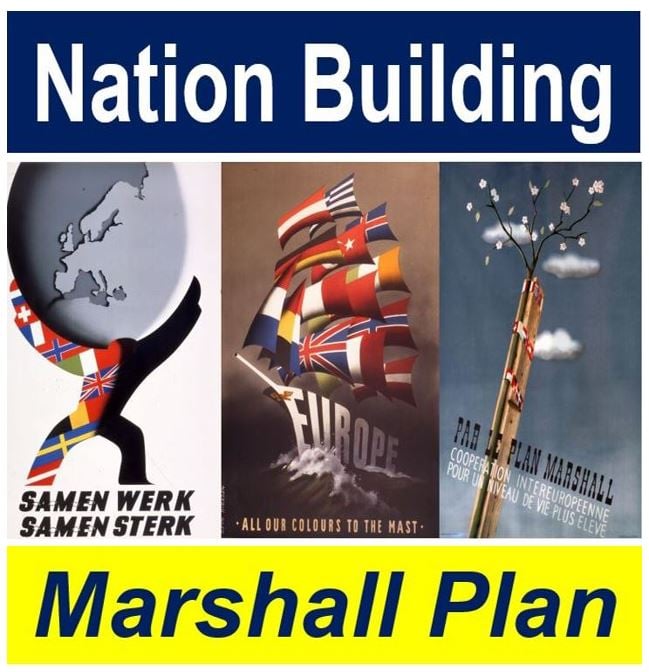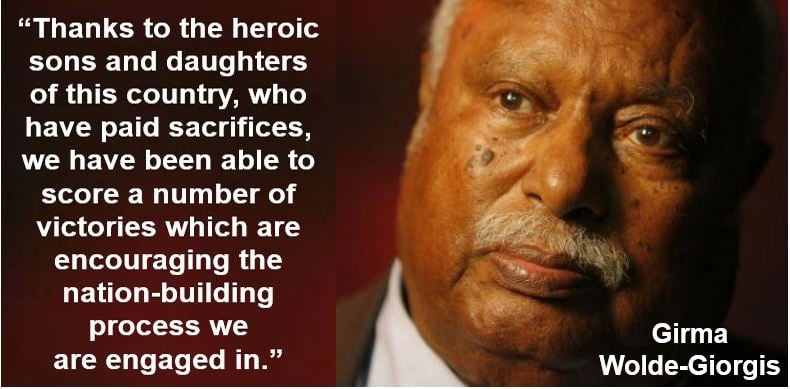What is nation-building? Definition and meaning
Nation-Building means creating a country that functions out of a non-functioning one – either because the old one has been destroyed in a war, has fallen apart, or never really worked properly, as occurred in Iraq, the Soviet Union, and Afghanistan respectively.
Journalists often use the term when referring to government policies that are designed to encourage a strong sense of national identity.
The term can be spelled with a hyphen, as in nation-building, or without a hyphen, as in nation building. When writing a text, make sure you are consistent – do not switch from one style to the other in the same article.
In South Africa, the term referred to the advocacy of national solidarity across the country in the post-apartheid era.
Nation-building after war, independence, or the total collapse of a country’s economy is not only necessary for that nation’s future prospects, but also its neighbors, the region, and sometimes the whole world.
According to the Economist’s glossary of terms, nation-building is:
“Creating a country that works out of one that does not – because the old order has collapsed (as in the former Soviet Union), or been destroyed by war (Iraq), or never really functioned in the first place (Afghanistan).”
“To transform a failed country can involve establishing order through the rule of law and creating legitimate government and other effective social institutions, as well as a credible currency and a functioning market economy.”
The aim of nation-building
The goal of nation-building is to unify the people within the country so that it remains politically viable and stable over the long term.
In the modern era, it typically refers to the efforts of the newly-independent states of Africa, as well as the nascent countries in the Balkans, including Serbia, Herzegovina, Montenegro, Macedonia, Croatia and Slovenia.

These infant countries had been carved out by colonial powers with no regard to religious, ethnic or other boundaries, or are the result of countries that have been split into smaller nations.
The aim in nation-building is to make sure that these countries become viable, stable and prosperous.
Nation-building is not easy
Nation-building is a very difficult and risky undertaking, especially in countries with deep religious, ethnic and/or political divisions within the population. Some people say that the task is virtually impossible if that country never really functioned effectively.
If the country or region has a good skills base and used to function effectively, nation building has a good chance of success, as occurred with the Marshall Plan after WWII. However, even in such favorable circumstances, there is no guarantee of success.
To recap, nation-building can mean:
- Rebuilding a collapsed state or region.
- Building a functioning state where one never really existed.
- Government policies aimed at creating a strong sense of national identity.
People involved in nation-building are called nation builders – they take the initiative and try to foster a feeling of community through government programs, including national content mass schooling and military conscription.
 The Marshall Plan, officially called the European Recovery Program, was an American nation-building program to help get Europe back on its feet after the Second World War. The total aid package was worth $120 billion in today’s money.
The Marshall Plan, officially called the European Recovery Program, was an American nation-building program to help get Europe back on its feet after the Second World War. The total aid package was worth $120 billion in today’s money.
It was the most successful international aid and nation-building program in history. It was named after General George Marshall (1880-1959), who put forward the proposal when he was US Secretary of State from 1947 to 1949 under President Harry S. Truman. (Images: marshallfoundation.org)
Different forms of nation-building
Nation-building can take many forms, including major infrastructure development or propaganda to encourage social harmony and trigger economic growth. It may also include the creation of national paraphernalia, such as national days, national airlines, anthems, flags, national stadiums, national languages, national sports teams, as well as national heroes and myths.
In the digital age, nation-building also encompasses the development and expansion of digital infrastructure, which is crucial for a country’s integration into the global economy.
In addition to the tangible aspects of nation-building, the process also significantly relies on cultivating digital literacy among citizens to enhance civic engagement and foster a more informed national community.
At a deeper and more subtle level, nation-building involves building different ethnic groups into one national entity. This can be especially challenging in countries that had been colonized – colonial powers would typically divide, rule and suppress the region’s social, ethnic, religious and cultural evolution.
When these countries gain their independence, ancient tribalism – rivalry between ethnic groups – resurfaces, and can sometimes tear the nation apart – especially if their territorial borders place rival groups together or spit one down the middle. Examples include Biafra, which in 1970 tried to Secede from Nigeria, or the continuing demand of the Somali population in the Ogaden region of Ethiopia for total independence.

Nation-building vs. state-building
While the terms state-building and nation-building have similar meanings, they are not the same.
- State-Building: refers to the state’s infrastructure and institutions. After a war, a country’s roads, railways, airports, water systems, etc. may need to be rebuilt.
- Nation-Building: refers to the people’s sense of national identity.
Technically speaking, state-building refers to physical things while nation-building refers to abstract things. However, the two terms have been used with the same meaning frequently over the past couple of decades. It won’t be long before this interchangeable usage becomes official.
Examples of nation-building
Here are some more examples of nation-building over the last one-hundred years.
-
Rwanda after the Genocide (1994 – Present)
Rwanda emphasized reconciliation and a unified national identity post-1994 genocide, leading to significant recovery and growth.
-
South Korea’s Economic Development (1960s – 1990s)
South Korea’s rapid post-war industrialization and educational investment transformed it into a developed economy.
-
Germany’s Reunification (1990)
The merging of East and West Germany in 1990 required extensive social and economic integration efforts.
-
Singapore’s Independence (1965 – Present)
Following independence in 1965, Singapore developed a strong economy and stable governance.
-
Botswana’s Post-Independence Development (1966 – Present)
Since 1966, Botswana has maintained stability and growth with a focus on democracy and economic diversification.
-
The Reconstruction of Japan (1945 – 1952)
Post-WWII Japan underwent democratization and economic reform, leading to its current peaceful prosperity.
-
Norway’s Peaceful Nation-Building (1905)
Norway established a stable democracy with a strong welfare system after peacefully separating from Sweden in 1905.
Video – What is Nation-Building?
This educational video, from our sister channel on YouTube – Marketing Business Network, explains what “Nation-Building” is using simple and easy-to-understand language and examples.

